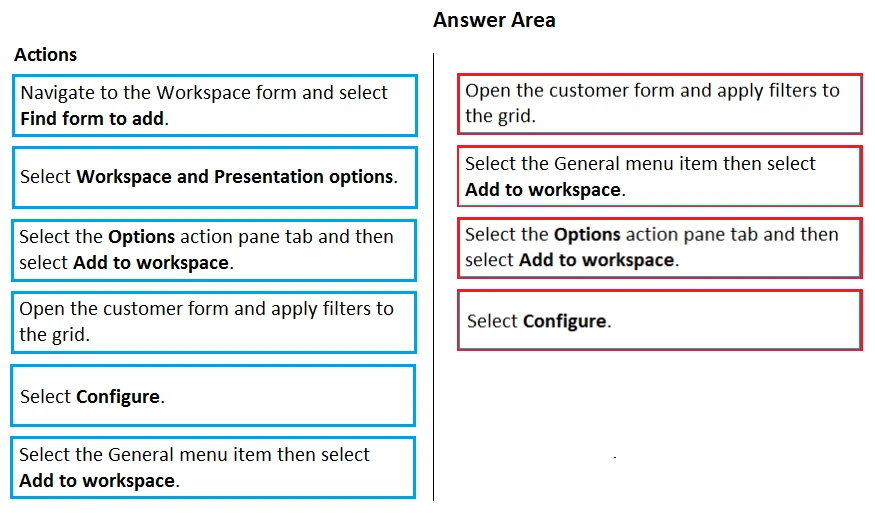What are two possible ways to achieve the goal?
Each correct answer presents a complete solution.
NOTE: Each correct selection is worth one point.
To prepare for deploying a software deployable package to a test environment, you can use two possible methods. First, in Azure DevOps, you can queue a build from the corresponding branch and upload the package to the asset library. This method involves creating a build pipeline in Azure DevOps that generates the deployable package and then uploads it to the Dynamics Lifecycle Services (LCS) project's asset library. Second, in Visual Studio, you can create a Dynamics 365 deployment package and upload the package to the asset library. This method involves using the Visual Studio tools to create the package and then manually uploading it to the LCS asset library. Both methods ensure that the deployable package is available in LCS for deployment to the test environment.
You are configuring your developer environment by using Team Explorer.
There are several developers working on a customization.
You need to ensure that all code is checked in and then merged to the appropriate branches.
In which order should you perform the actions? To answer, move all actions from the list of actions to the answer area and arrange them in the correct order.
NOTE: More than one order of answer choices is correct. You will receive credit for any of the correct orders you select.
Select and Place:
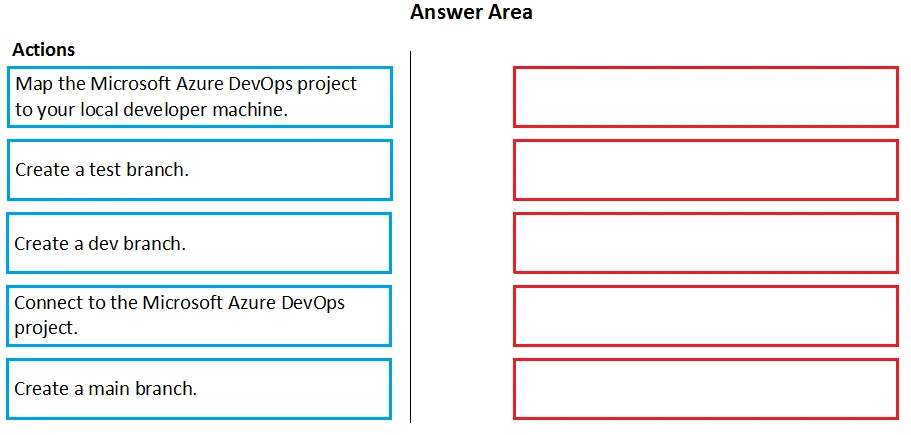
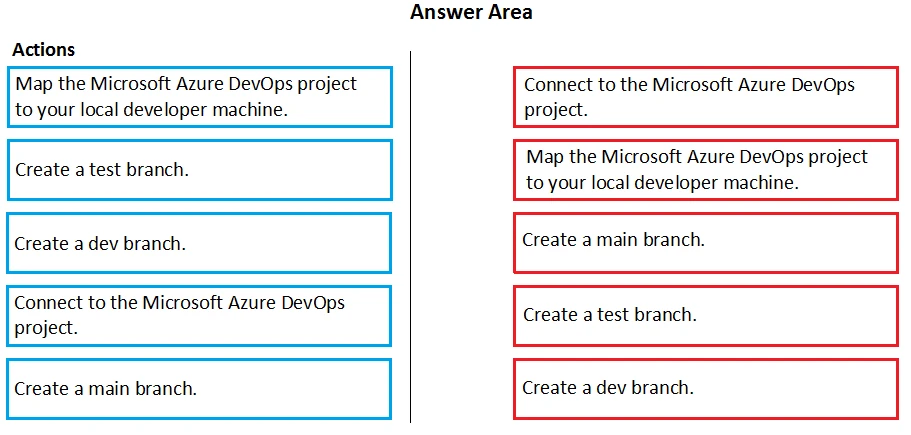
You need to create an extension class.
Which action should you perform?
To create an extension class in Dynamics 365 Finance, you need to mark the class as final. This is because extension classes cannot be derived from, and marking them as final ensures that they remain final. Extension classes in Dynamics 365 are used to extend existing functionality and are adorned with the ExtensionOf attribute. The correct action to perform is to mark the class as final.
You need to explain the relationships between models, packages, and projects to the new hire.
Which three design concepts should you explain? Each correct answer presents a complete solution.
NOTE: Each correct selection is worth one point.
A model in Dynamics 365 Finance is a group or collection of elements that constitute a distributable software solution, making it a design-time concept. It includes metadata and source files and often represents customizations of an existing solution. A package is a deployment unit that can contain one or more models, allowing for the organization and deployment of these solutions. These three design concepts accurately explain the relationships between models, packages, and projects.
You are a Dynamics 365 Finance developer.
Users must be able to view a filtered customer list from within a workspace.
You need to add the customer form to a workspace.
Which four actions should you perform in sequence? To answer, move the appropriate actions from the list of actions to the answer area and arrange them on the correct order.
Select and Place:
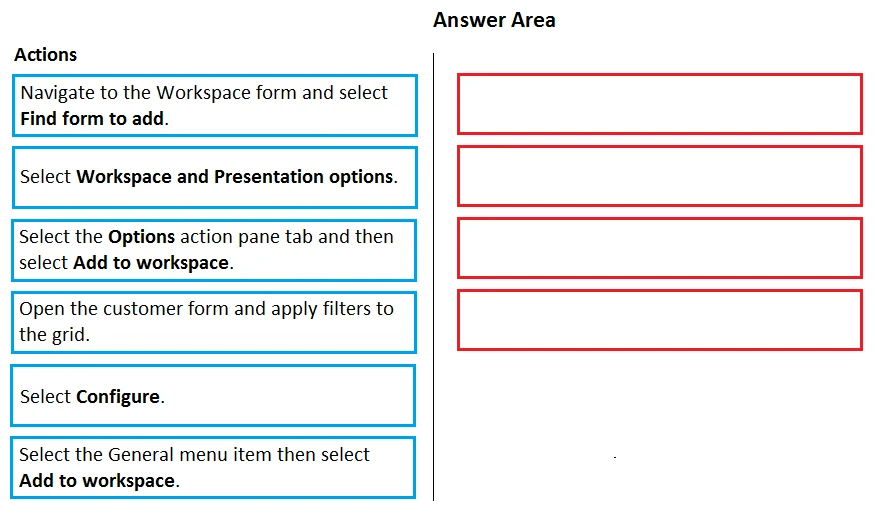
To add a list to a workspace, first sort or filter the list on the page so that it shows the information as you want it to appear in the workspace.
Step 2: Select the General menu item then select Add to workspace
This workspace will be selected in step 3.
Step 3: Select the Options actions pane tab and then select Add to workspace.
For some pages that include lists, the Add to workspace personalization feature is available in the Personalize group on the Options tab of the Action Pane. This feature lets you push relevant information from the current list to a specific workspace.

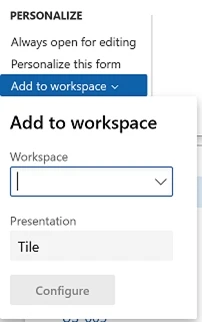
Step 4: Select Configure -
After you select Configure, a dialog box appears, where you can select the columns that should appear in the list in the workspace.
Reference:
https://docs.microsoft.com/en-us/dynamics365/fin-ops-core/fin-ops/get-started/personalize-user-experience
